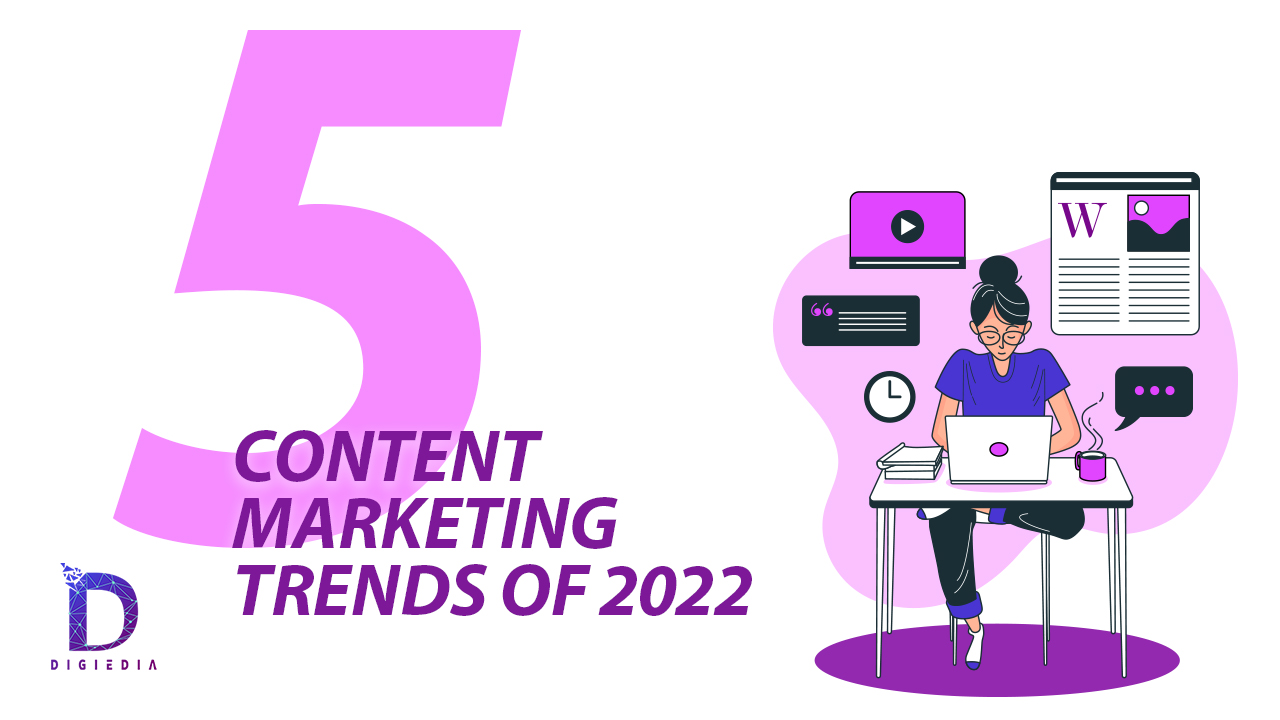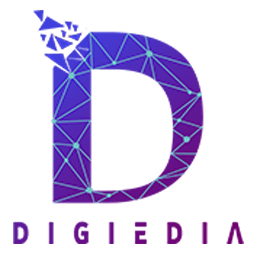
5 Content Marketing Trends of 2022
- DIGIEDIA
- Blogs
- 17 May 2022
- No Comments
As the year advances, marketers are constantly looking for new ways to better attract and engage current and potential customers. Keeping up with what’s new and what’s coming next allows you to make sure your strategies are current and effective. In terms of content marketing, we’re already seeing some patterns emerge in the future year. In a recent blog, we talked about content marketing trends and engaging potential customers by educating them with high-quality information. It’s an organic way to build rapport and trust because you’re not selling, but rather solving a problem that will lead to a delighted customer.
Content marketing has evolved since its inception, and with innovative technologies and new communication channels, we don’t expect it to slow down anytime soon. Even though the new year has only just begun, we’ve already seen what’s new and coming in the content marketing world, including five content marketing trends.
5 Content marketing trends
Chatbots and Artificial Intelligence
Artificial intelligence is used by almost every organization, whether you realize it or not. It gives you the ability to not only meet your company’s bottom line but also better manage your time. If a chatbot appeared on a website, for example, it was once frowned upon. Until now, that is. Chatbots have gone a long way since the first one, ELIZA, in 1966.
AI assistants like Siri, Alexa, and Cortana are becoming increasingly ubiquitous after a few decades. Chatbots are now widely used on websites because they allow businesses to have more interactions with website visitors and communicate like never before with sophisticated discussions that sound far more authentic than previous attempts.
Non-Traditional Influencers
Natural and continuous engagement with people who interact with your firm (and aren’t only customers!) can help your content strategy. Taking a picture and uploading it to social media platforms like Facebook and Instagram is quite straightforward. While displaying customer engagement is beneficial, it should not be the only way you display consumer activity related to your business. Employees, customers’ families, tourists, and others can all affect your business. These influencers have the potential to have a long-term impact on your marketing strategy. Taking a picture of your company’s employee of the month and posting it on Facebook, for example, might disclose a lot about your company.
It demonstrates that your organization values its employees and is an excellent place to work. Even if the employee isn’t a prospective customer, a family member or friend who sees the photo could be.
A Data-Driven Approach
More than ever before, we can see the value and potential of data. When it comes to content creation, it’s not only a matter of chance; it’s also a matter of researching what has and hasn’t worked in the past. Marketers can use a variety of technologies to evaluate content strategy metrics regularly. When it comes to building a successful strategy, one of the “must-haves” is blogging, and having access to data on how those blogs are performing demonstrates how you can keep improving based on user involvement. So, what precisely do we mean when we say that? Content marketing trends in your statistics, such as bounce rate, time per page visit, and entrances, might help you figure out how to better your content in the future.
Content marketing data gives you a unique insight into a potential customer’s thoughts, allowing you to learn what drives them to continue on their buyer’s journey toward a purchase.
Information Clusters
If you’re familiar with content marketing, you’ve probably heard of pillar pages. But what about content clusters? Content clusters have become a part of SEO tactics that focus on creating high-quality content around a certain topic with keywords relevant to a specific pillar page. This trend is being driven by the way people use Google and other search engines. People used to use search engines to hunt for just one or two terms, such as “Florida hotel.” People nowadays are looking for significantly more particular terms, such as “which hotel in Florida is the best?” Marketers want to make sure they’re not just writing about one topic and stuffing as many keywords as they can into it.
It’s all about breaking down a single topic into several subcategories to create high-quality content that both answers or solves a visitor’s problem and pleases search engine algorithms.
Personalization and interactivity
Visitors to your website, as well as those who connect with your business, want to feel special. They don’t want a chatbot to respond with a terse remark that leaves a lot to interpretation and leaves a lot to be desired, as we previously outlined. To engage with potential customers, it’s vital to grasp how information is becoming more interactive and personal. Emails with personalized subject lines (for example, including the recipient’s first name) had a 26 percent greater open rate, according to Whisk Data. It just goes to show that personalization can help you capture someone’s attention. Marketers are pushing the limits of customer engagement to new heights that are beneficial to both parties.
Polls and surveys are great ways to engage visitors since they provide you not just their attention but also their contact information and other useful information. This might help you re-target your clients even more so you can continue to give them the content they want.
Conclusion
The abovementioned were the content marketing trends that will help you in moving ahead. Marketers currently have a wealth of alternatives for creating a memorable experience for customers that connect with their business. From cutting-edge technologies like AI to data-driven tactics and customization, content marketing provides a fantastic foundation for unrivaled ROI.
